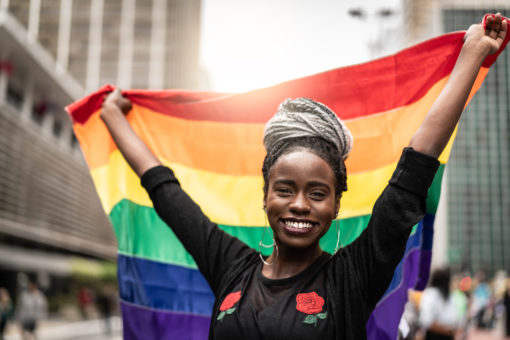Updated on 03/29/24
At a glance: June is Pride Month and it’s important to understand the barriers to mental health treatment the impact the LGBTQ+ community. Statistics show that those in the LGBTQ+ community have a higher risk of suicidal thoughts and attempts than heterosexuals. It’s important to support individuals so they have access to mental health care.
June is Pride Month. The purpose of the commemorative month is to recognize the impact that lesbian, gay, bisexual, transgender and queer (LGBTQ+) individuals have had on history locally, nationally and internationally. LGBTQ+ individuals have been fighting to fit into their communities and be accepted by all for years. The stigma associated with the LGBTQ+ and the mental health community is no different. Research has shown that the LGBTQ+ community is less likely to seek treatment for an eating disorder, a mental health disorder or a substance use disorder due to fear of rejection and discrimination.
Barriers to Mental Health Treatment in the LGBTQ+ Community
Common barriers to treatment in the LGBTQ+ community include a lack of culturally-competent treatment, which addresses the complexity of unique sexuality and gender identity issues, lack of support from family and friends and insufficient eating disorder education among LGBTQ+ resource providers who are in a position to detect and intervene. In the 1950s and 60s, many psychiatrists believed that homosexuality, as well as bisexuality, was a mental illness. Gay men and lesbians were often subjected to treatment against their will, including forced hospitalizations, aversion therapy and electroshock therapy. Significant strides have been made since then, and many therapists and physicians today have positive and accepting attitudes towards the LGBTQ+ community. However, there are still many people in this community facing unequal care due to a lack of training and/or understanding.
LGBTQ+ Mental Health Statistics
- The LGBTQ+ population is at a higher risk than the heterosexual, cisgender population for suicidal thoughts and suicide attempts.
- High school students who identify as lesbian, gay or bisexual are more than four times as likely to have attempted suicide compared to their heterosexual peers.
- 40% of transgender adults have attempted suicide in their lifetime, compared to less than 5% of the general U.S. population.
Knowing the stats isn’t enough. We can all take action to offer our support, acceptance and affirmation towards the LGBTQ+ individuals in our lives. Whether we are parents, friends or healthcare providers, we can all play a part in supporting the LGBTQ+ community with our words and with our actions.
June is LGBTQ+ Pride Month
Lesbian, gay, bisexual and transgender Pride Month (LGBTQ+ Pride Month) is celebrated annually in June to honor the 1969 Stonewall riots and works to achieve equal justice and equal opportunity for lesbian, gay, bisexual, transgender and queer (LGBTQ+) Americans.
Awareness events and celebrations will take place all over the United States and include Pride parades, picnics, parties, workshops, symposia and concerts. This particular month attracts visitors from across the globe to take place in the celebrations. Memorials are also held during this awareness month for those members of the community who have been lost to hate crimes or HIV/AIDS.
Whether you choose to celebrate with others or alone, you can honor and acknowledge the struggles of those who have come before you.
Discovery Mood & Anxiety Program is here to help you with mental health challenges. Reach out today to learn more.
